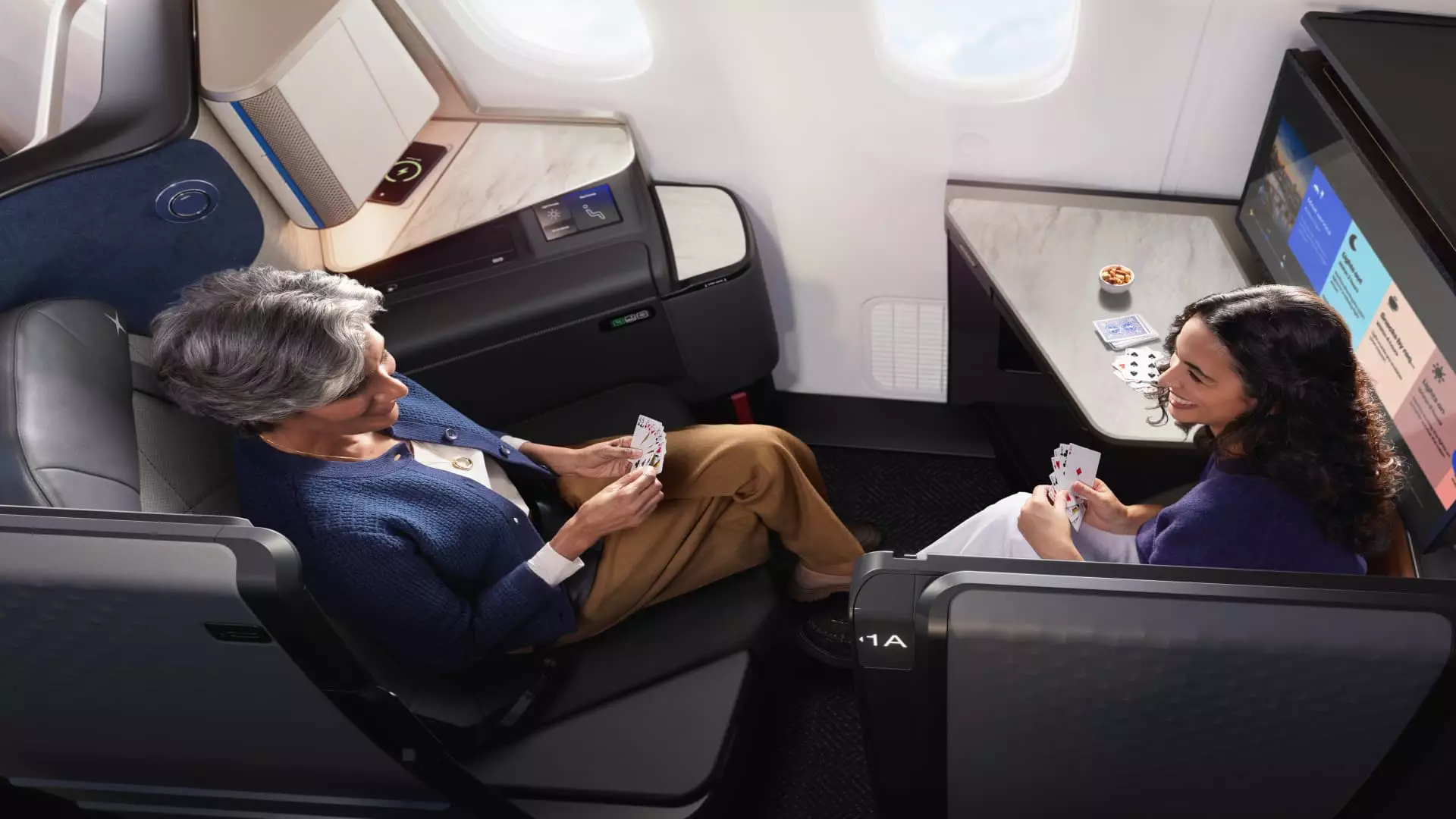In a bid to claim international business-class superiority, U.S. airlines are flaunting extravagant features that verge on the absurd. With a heaping of caviar and Bang & Olufsen headphones as their weapons of choice, carriers like American Airlines and United Airlines are entangled in a competition where the announcement of new “premium” cabins often overshadows the real concerns of accessibility and equality in air travel. At the core of this aviation rivalry lies a stark reality: luxury pervades, but it does so at a price that’s often incomprehensible to the average traveler. As American Airlines unveils its new business-class “suites” with sliding doors and premium amenities, one has to wonder whether the pursuit of opulence is losing sight of the fundamental essence of travel—affordability and accessibility.
The intention behind enhancing business-class cabins could be seen as an attempt to justify the exorbitant costs of tickets that can easily exceed several thousand dollars. For example, American Airlines charges about $5,747 for a business-class suite from Philadelphia to London, whereas a standard economy ticket runs a mere $867. This alarming disparity signals a broader issue in the industry: as airlines continue to justify exorbitant prices in the name of luxury, they risk alienating a significant portion of their customer base who are simply seeking transportation from point A to point B. In an era certainly teetering on an economic downturn, such practices raise eyebrows and provoke thoughtful discourse.
The Elite Divide: First Class vs. Business Class
Interestingly, the differentiation between business class and first class is growing murky, with many airlines opting to eliminate traditional first-class services altogether. American’s shift to prioritize a more luxurious business class certainly highlights that point. While many corporations refuse to sanction first-class tickets for their employees, they readily approve business-class travel. This nomenclature debate emphasizes the troubling reality that what constitutes “luxury” is morphing, yet remains inaccessible to the majority.
Nonetheless, the lavish B and O headphones and gourmet meals might appeal to a small elite, but do they enhance the aviation experience for the average traveler? When you’re trapped in a cramped economy seat, the allure of caviar served in the front of the cabin does not address the frustrations faced by the masses in the back. This luxurious, yet pretentious, indulgence of business class is a reflection of a society increasingly divided by economic disparities—where the comfort of the wealthy is prioritized over the basic comforts of the wider travel population.
Seeing Through the Glitz: Marketing Euphoria vs. Reality
Now, take note of the marketing euphoria these airlines are peddling to reinforce the notion that splurging on business class is the golden ticket to an experience above mere transportation. The CEOs do not shy away from flaunting their newly designed interiors, complete with larger screens, plush seating, and in some cases, even separate areas for visitors. Yes, the Polaris Studio by United Airlines might seem enticing, but the real question lies in its market—how many travelers can afford this suite of indulgence?
As these airlines capitalize on an experience that “premium” customers desire, they obscure the dismal realities of domestic coach travel. The overt luxury provided in business class is juxtaposed against travelers forced into subpar conditions in economy. Amid high ticket costs, basic amenities—like space to breathe, decent legroom, and, dare I say, comprehensible customer service—are cast aside. It becomes laborious to embellish a position of privilege while ignoring the unfortunate plight faced by most travelers in economy.
Trading Comfort for Overindulgence
It remains a perplexing reality that air carriers are investing billions in this luxury arms race while occasionally neglecting actual passenger needs. Sure, American Airlines announced free satellite Wi-Fi and upgraded meal options, but these fine touches seem like they’re band-aids on a much larger issue—a sense of disconnect from everyday travelers. Are these airlines truly listening, or are they too entrenched in the extravagance of their new offerings?
Moreover, as Robert Mann aptly pointed out, the poor experience in economy may be pushing travelers toward indulgence to escape their reality. Airlines seem more preoccupied with catering to the desires of a wealthy few rather than addressing the systemic issues that plague the majority of their passengers. In this relentless race to cater to a select demographic, the question hangs: at what point does the pursuit of luxury become counterproductive, creating more separation than satisfaction?
In essence, the growth of premium airline experiences cannot overshadow the concerns we must acknowledge about the growing gap in access to quality travel. As we witness airlines embark on this lavish spiral, one must wonder if the true essence of air travel—affordable, accessible transportation for all—is being lost in a chase for prestige. The industry must recalibrate its priorities, or risk becoming a playground for the elite, leaving behind a hollow promise of connectivity and inclusiveness in the sky.

